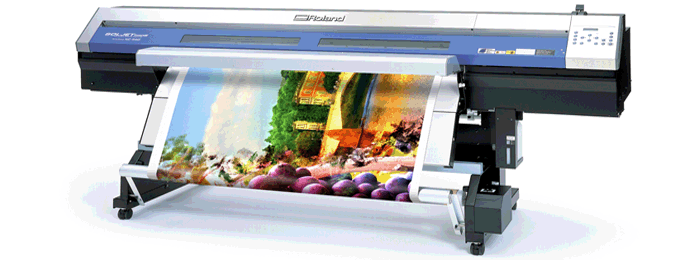search box
Sunday, July 11, 2010
Find Part Time Jobs by Location
Saturday, July 10, 2010
is the process by which companies create customer interest in products or services. It generates the strategy that underlies sales techniques, business communication, and business development.
Services marketing,[15] as the label suggests, relates to the marketing of services, as opposed to tangible products (in standard economic terminology, a tangible product is called a good).
A typical definition of a service (as opposed to a good) is thus:
- The use of it is inseparable from its purchase (,i.e. a service is used and consumed simultaneously)
- It does not possess material form, and thus cannot be smelt, heard, tasted, or felt.
- The use of a service is inherently subjective, in that due to the human condition, all persons experiencing a service would experience it uniquely.
As examples of the above points, a train ride can be deemed as a service. If one buys a train ticket, the use of the train is typically experienced concurrently with the purchase of the ticket. Moreover, a train ride cannot be smelt, heard, tasted or felt as such. Granted, a seat can be felt, and the train can be evidently heard, nonetheless one is not paying for the permanent ownership of the tangible components of the train.
Services (by comparison with goods) can also be viewed as a spectrum. Not all products are pure goods, nor are all pure services. The aforementioned example of a train ride can be deemed a pure service, whilst a packet of potato chips can be deemed a pure good. An intermediary example may be a restaurant (as the waiter service is intangible, and the food evidently is tangible in form).
- ^ a b Kotler, Philip; Gary Armstrong, Veronica Wong, John Saunders (2008). "Marketing defined". Principles of marketing (5th ed.). p. 7. http://books.google.com/books?id=6T2R0_ESU5AC&lpg=PP1&pg=PA7#v=onepage&q=&f=true. Retrieved 2009-10-23.
- ^ a b Kotler, Philip; Gary Armstrong, Veronica Wong, John Saunders (2008). "Marketing defined". Principles of marketing (5th ed.). p. 17. http://books.google.com/books?id=6T2R0_ESU5AC&lpg=PP1&pg=PA7#v=onepage&q=&f=true. Retrieved 2009-10-23.
- ^ "Definition of Marketing". American Marketing Association. http://www.marketingpower.com/AboutAMA/Pages/DefinitionofMarketing.aspx. Retrieved 2009-10-30.
- ^ Paul H. Selden (1997). Sales Process Engineering: A Personal Workshop. Milwaukee, WI. p. 23.
- ^ "Definition of marketing". Chartered Institute of Marketing. http://www.cim.co.uk/resources/understandingmarket/definitionmkting.aspx. Retrieved 2009-10-30.
- ^ a b Paliwoda, Stanley J.; John K. Ryans. "Back to first principles". International Marketing: Modern and Classic Papers (1st ed.). p. 25. http://books.google.com/books?id=dwZz2eHBCjUC&lpg=PP1&pg=PA25#v=onepage&q=&f=false. Retrieved 2009-10-15.
- ^ a b Kotler, Philip; Kevin Lane Keller (2009). "1". A Framework for Marketing Management (4th ed.). Pearson Prentice Hall. ISBN 0136026605.
- ^ a b c d e Adcock, Dennis; Al Halborg, Caroline Ross (2001). "Introduction". Marketing: principles and practice (4th ed.). p. 15. http://books.google.com/books?id=hQ8XfLd1cGwC&lpg=PP1&pg=PA15#v=onepage&q=&f=true. Retrieved 2009-10-23.
- ^ a b c Adcock, Dennis; Al Halborg, Caroline Ross (2001). "Introduction". Marketing: principles and practice (4th ed.). p. 16. http://books.google.com/books?id=hQ8XfLd1cGwC&lpg=PP1&pg=PA16#v=onepage&q=&f=true. Retrieved 2009-10-23.
- ^ "Marketing Management: Strategies and Programs", Guiltinan et al., McGraw Hill/Irwin, 1996
- ^ Dev, Chekitan S.; Don E. Schultz (January/February 2005). "In the Mix: A Customer-Focused Approach Can Bring the Current Marketing Mix into the 21st Century". Marketing Management 14 (1).
- ^ "Swarming the shelves: How shops can exploit people's herd mentality to increase sales? ". The Economist . 2006-11-11 . p. 90.
- ^ Joshi, Rakesh Mohan, (2005) International Marketing, Oxford University Press, New Delhi and New York ISBN 0195671236
- ^ "Chapter 6: Organizational markets and buyer behavior". Rohan.sdsu.edu. http://www-rohan.sdsu.edu/~renglish/370/notes/chapt06/index.htm. Retrieved 2010-03-06.
- ^ "Services Marketing". Marketingteacher.com. http://www.marketingteacher.com/Lessons/lesson_services_marketing.htm. Retrieved 2010-03-06.
Earlier approaches
The marketing orientation evolved from earli
er orientations namely the production orientation, the product orientation and the selling orientation.[7][8]
| Orientation | Profit driver | Western European timeframe | Description |
|---|---|---|---|
| Production[8] | Production methods | until the 1950s | A firm focusing on a production orientation specializes in producing as much as possible of a given product or service. Thus, this signifies a firm exploiting economies of scale, until the minimum efficient scale is reached. A production orientation may be deployed when a high demand for a product or service exists, coupled with a good certainty that consumer tastes do not rapidly alter (similar to the sales orientation). |
| Product[8] | Quality of the product | until the 1960s | A firm employing a product orientation is chiefly concerned with the quality of its own product. A firm would also assume that as long as its product was of a high standard, people would buy and consume the product. |
| Selling[8] | Selling methods | 1950s and 1960s | A firm using a sales orientation focuses primarily on the selling/promotion of a particular product, and not determining new consumer desires as such. Consequently, this entails simply selling an already existing product, and using promotion techniques to attain the highest sales possible. Such an orientation may suit scenarios in which a firm holds dead stock, or otherwise sells a product that is in high demand, with little likelihood of changes in consumer tastes diminishing demand. |
| Marketing[8] | Needs and wants of customers | 1970 to present day | The 'marketing orientation' is perhaps the most common orientation used in contemporary marketing. It involves a firm essentially basing its marketing plans around the marketing concept, and thus supplying products to suit new consumer tastes. As an example, a firm would employ market research to gauge consumer desires, use R&D to develop a product attuned to the revealed information, and then utilize promotion techniques to ensure persons know the product exists. |
